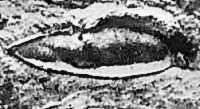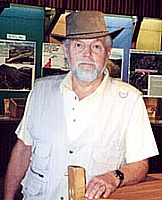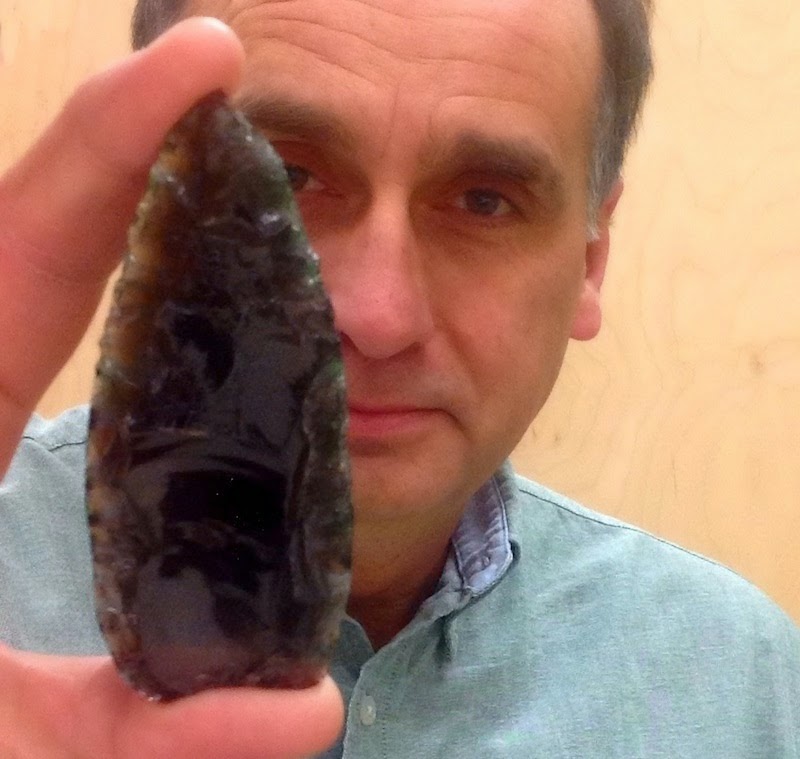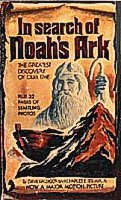An example of ‘creation science’ in action:
the case of Noah’s missing Ark
One of the Biblical stories that forms a central part of creationist beliefs is the supposed universal flood of Genesis. According to the account, the flood took place when Noah was 600 years old; the data provided by the genealogies in Genesis allow us to calculate that this would have been about 1,600 years after creation. If we assume the earth to have been created in 4004 BCE, the flood would have happened about 2348 BCE, around the time the pyramids were being built at Giza.
What’s the evidence?
Unsurprisingly, the Egyptian historical records of the period, which are reasonably full and complex, do not document a flood or the complete annihilation of population from the Nile valley.
Nor is there any indication that in the years following the otherwise undocumented flood, the region was recolonised by a new population, the descendants of a Mesopotamian boat-builder and the animals he had rescued from the antediluvian world.
Further afield, Chinese records make no mention of this universal flood.
The archaeological record of the Indus Valley civilisation fails to show a mid-third-millennium hiatus.
In Britain, the third millennium saw the development of Stonehenge from a simple banked enclosure to a complex arrangement of stones with no evidence that it languished for the best part of a year, half finished, under thousands of metres of floodwater.
Nowhere in the world do we find archaeological evidence for any form of disruption to populations, cultures or settlement patterns at the required date.
The sole piece of evidence used by creationists is the so-called ‘flood deposit’ found by Sir Leonard Woolley (1880-1960) at Ur in 1929. This is more probably explained as a result of silting in marshes towards the moths of the Rivers Euphrates and Tigris at a time of a marine transgression, when the Persian Gulf extended further north than it now does than evidence for even a regional flood.
There is simply no evidence from any part of the world to support the Biblical account of a worldwide flood in the third millennium BCE (or at any other time, for that matter!) that wiped out all humanity, land animals and birds, with the exception of eight people from Mesopotamia and the animals that accompanied them on the Ark and the recolonisation of the earth by their descendants.
One response to the problem has been to re-date ancient sites, especially those of Egypt. Pointing out that pioneer Egyptologists in the early nineteenth century developed chronologies pushing back the start of pharaonic civilisation to before 5000 BCE and that the tendency since has been to reduce these chronologies to start around 3000 BCE, some suggest that it should be downdated still further. Dates as late as c 2250 BCE have been proposed by suggesting that the Old Kingdom (conventionally 3100-2150 BCE) and Middle Kingdom (2100-1750 BCE) were contemporary.
This can only be done by manipulating lists of kings and other textual evidence; it is shown up as impossible by stratigraphy, where Old Kingdom remains always precede those of the Middle Kingdom on sites where both occur. In other places, it becomes necessary to discard radiocarbon and other scientifically derived dates, as we saw above.
Claims that we've found the Ark
According to a story first published in 1940 in New Eden, a Los Angeles (USA) magazine, a ship-like shape had been discovered on the slopes of Mount Ararat by a Russian pilot, Lieutenant Vladimir Roskovitsky during the late summer of 1916, but although the story has long been known to be a hoax, it is still repeated by creationists, especially those dubbed "Arkeologists" by their critics. Attempts to salvage the story by suggesting that Roskovitsky was a pseudonym and that there were in fact two pilots (First Lieutenants Zabolotsky and Lesin of the Third Caucasian Air Division) take no account of the thirty-six year delay between alleged discovery and report. International tensions in the region following the Russian Revolution in 1917 prevented international exploration until 1948, although rumours that a detachment of Russian soldiers spotted it in the summer of 1917 and Soviet Major J Maskelyn sent an pilot and, subsequently, investigators to the location of ‘Roskovitsky’s’ discovery during the Second World War continue to circulate.
An American team is said to have visited Ararat in 1948 but to have found nothing.
Four years later, a French team led by Fernand Navarra (born 1915), a wealthy demolition engineer from Bordeaux, discovered the shape of a ship’s hull visible beneath the ice of a glacier, which proved to be nothing more than an unusual rock formation. He returned three more times (in 1953, 1955 and 1969).
Wood samples he brought back have been radiocarbon dated to between around 1300 years old and 1700 years old: much too young to have come from Noah’s ark, which ought to be almost five thousand years old. Nevertheless, some authors continue to maintain that the radiocarbon date was determined as c 5000 bc.

The formation near
Doğubayzit (Turkey)
In 1960, Life magazine ran a story about an expedition to investigate the outline of what appeared to be a ship on the slopes of Mount Kalinbabada near Doğubayazit in eastern Turkey, rather than on Ararat itself. One scientist in the group offered the opinion that the phenomenon was too symmetrical to be a natural formation, but an intensive search of the site failed to produce any evidence for artificiality. Nevertheless, one of the photographs of the formation was captioned by the magazine as if to suggest that the phenomenon might be the remains of Noah’s Ark. The site remained a potential identification for believers in the literal truth of Genesis. Other searches placed Noah’s grounded Ark on its traditional location on Mount Ararat, further north. A 1975 Sun-TV special and its tie-in book, In Search of Noah’s Ark, by the “motivational speaker” and religious activist David (Dave) W Balsiger and Mormon television/film director Charles E (Chuck) Sellier proved to reawaken interest in the subject.
Here we go again…

Ron Wyatt (1933-1999)
In the mid 1980s, another explorer, named Ron Wyatt (1933-1999), returned to re-identify the Doğubayazit formation with Noah’s Ark. He claimed that it contained large quantities of ‘gopher wood’, from which Genesis says the Ark was built. The Turkish Ministry of Cultural Affairs and the High Commission on Ancient Monuments declared the area a national park, allegedly to protect it from the unwanted attentions of looters. A number of supposed artefacts were recovered from the site and the surrounding area, including what was said to be an iron bracket. Microscopic studies showed that the ‘bracket’ was entirely natural and had formed from weathered volcanic minerals. The supposedly fossilized ‘gopher wood’ bark turned out to be metamorphosed peridotite. Ground penetrating radar surveys that were initially claimed to reveal metal-braced walls proved to show naturally occurring concentrations of limonite and magnetite in steeply inclined sedimentary layers. Fossiliferous limestone cutting across the syncline that forms the feature shows that the structure cannot have been Noah’s Ark according to the creationist rules because these supposed flood deposits are younger than the Ark, whereas it ought to have come to rest on top of them. Pierced cylindrical stones found at Kazan, traditionally identified as the anchor stones of the Ark, are local andesite and not minerals from Mesopotamia, where the Biblical story indicates that they should have originated.
The Doğubayazit ‘Ark’ is beyond doubt an entirely natural formation and it is misleading of creationists to claim that there is evidence to show that it is a ‘fossilised’ ship. Ingenious explanations that it is the ‘imprint’ of the ship in the natural rock and that the ark itself has slid further down the mountainside to the location of ‘Roskovitsky’s’ discovery ignore several inconvenient facts: the Doğubayazit formation lies at an altitude of around 2000 m, 50 km south or Ararat, while ‘Roskovitsky’s’ discovery lay at an altitude of around 3500 m on the northern slope of the mountain; the Doğubayazit formation has a pointed ‘prow’, while ‘Roskovitsky’ saw a barge-like object with squared-off ends. However, these logical inconsistencies do not deter Arkeologists, even though many now dismiss the work of Ron Wyatt (who, incidentally, claimed to have identified such important archaeological discoveries as the wheels of chariots from pharaoh’s army on the bed of the Red Sea, the pillar of salt that was once Lot’s wife or Noah’s house). Nevertheless, creationists continue to search for the remains of Noah’s Ark, despite the overwhelming consensus of biblical scholars that the story in Genesis is not the original version of the story.
Update: the 2009 expedition to Ararat
In January 2009,
it was announced that Dr Randall Price, a lecturer in Judaic Studies at the
fundamentalist Libery University, Virginia (USA) would be taking an expedition to Turkey to search Mount Ararat for the remains of Noah’s Ark. In twenty-five years of searching, he has visited Turkey more than thirty times and, in 2008, he met a Kurdish shepherd who claimed to have seen the Ark as a boy. In September 2008, the shepherd led Price to the location but found that it was covered by boulders, which they estimated to be some sixty feet (18.3 m) deep. He estimated that he would need about $60,000 to pay for an expedition to remove the boulders and locate fragments of the Ark.
So, in the spring of 2009, he set out again. In a
news release, he updated his progress by 28 December 2009. Despite the upbeat tone of the piece (“
we’d like to think it’s Noah’s Ark, we’re not sure what it is, but it’s in the right place”;
whatever there is to be discovered, it should be found when he returns in the coming summer), it is obvious that he has nothing to show for his efforts (apart, one suspects, for a bank balance now depleted by $60,000 raised from where? The faithful?). Richard Bartholomew’s
blog has a niecly dismissive piece on this latest
attempt to fleece the faithful raise money for a worthy quest.
The origins of the flood story

The mythical
King Gilgamesh
The stories surrounding the Sumerian hero Gilgamesh include a Flood legend so like the one in Genesis (with a Noah character, Ziusudra, known to Ancient Greek writers as Xisuthros), that they are obviously a source for much of the Noah story. Even the most conservative estimates for the date of the Pentateuch place it at least a thousand years later than the surviving versions of the Sumerian story. In the Assyrian Epic of Gilgamesh proper, the survivor of the flood is called Utnapishtim, who landed on the Mountain of Nisir. There is also an Old Babylonian poem that mentions a universal flood, this time with a hero called Atraḫasīs or Ḫasīsatra. Most Biblical scholars (with the exception of Christian fundamentalists) agree that the ancient Hebrews adopted a flood story into their mythology at some point during a period of close contact with Mesopotamia, perhaps during the Exile or perhaps much earlier, in view of the differences between it and the Babylonian version.
One of the investigators in the 1980s, David Fasold (1939-1998), quickly recognised that the feature near Doğubayazit is not Noah’s Ark, but an entirely natural, geological formation. However, as an interesting corollary, he suggested that it may well have been the very shape of the site that encouraged ancient populations to think of it as a ship and to invent the story of a Deluge to account for its presence 2,000 metres up a mountainside. Whilst this is an ingenious explanation, we do not know that Mount Kalinbabada, the location of the Doğubayazit formation, is the biblical Ararat or Assyrian Nisir, nor do we know that the shape of the formation that looks so boat-like today appeared equally boat-like four thousand years ago.
Conclusion
It should come as no surprise that other past societies have flood myths. Leaving aside obvious allegorical connotations to purifying rebirth, they are a key element in the mythologies of civilisations who owe their existence to flood-prone river systems such as the Nile, Tigris or Euphrates.
Creationism is ultimately a dogmatic and inflexible religious system that demands an unquestioning belief in its authority from its followers. It does not represent the mainstream views of those within the religions in which it has taken hold. Despite the claims of so-called Scientific Creationism or Intelligent Design, their system is not open to testing in anything like the ways that would be acceptable to mainstream scientists. Members of some creationist institutions are required to sign statements that they will uphold and not question the central beliefs of creationism. Many prominent creationists apparently believe that whatever advances the cause is true, whereas whatever damages it is false (an attitude with a venerable Christian history: the third-century bishop Clement of Alexandria taught that it is right to lie if it helps spread the faith, even to the extent of denying something palpably true). Errors should be covered up as soon as possible and only admitted when failure to do so threatens greater damage to the cause. If colleagues spread errors, it is better not to criticise them in public, as it is better to deceive believers than to have them question the legitimacy of their leaders. This exposes the huge gulf between ‘creation science’ and real science. Scientists become famous by overturning the errors of previous generations; in ‘scientific creationism’, a system based on authority and faith, someone who exposes an error is a treacherous apostate.
This page was
Written by Keith Fitzpatrick-Matthews and James Doeser










